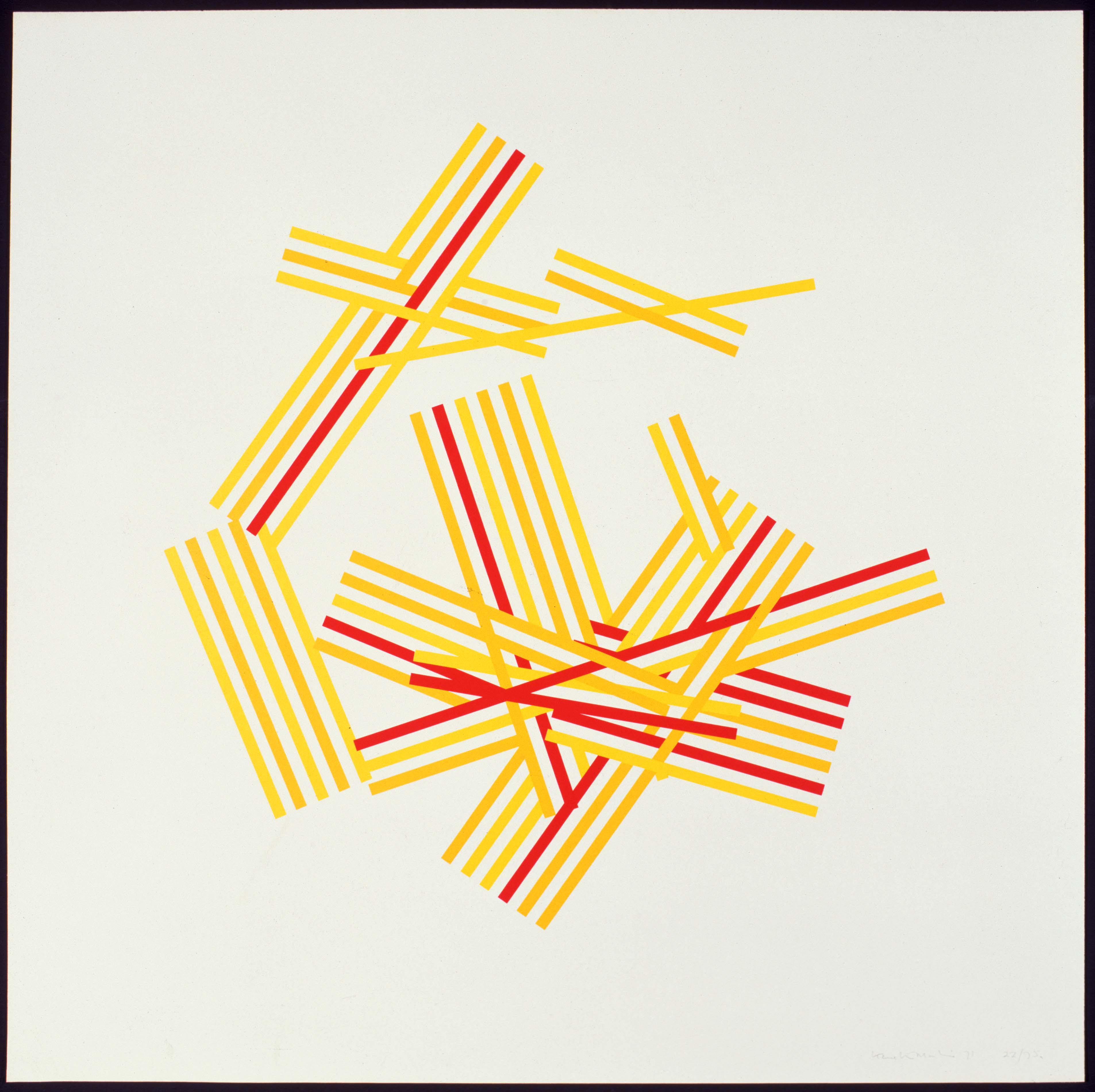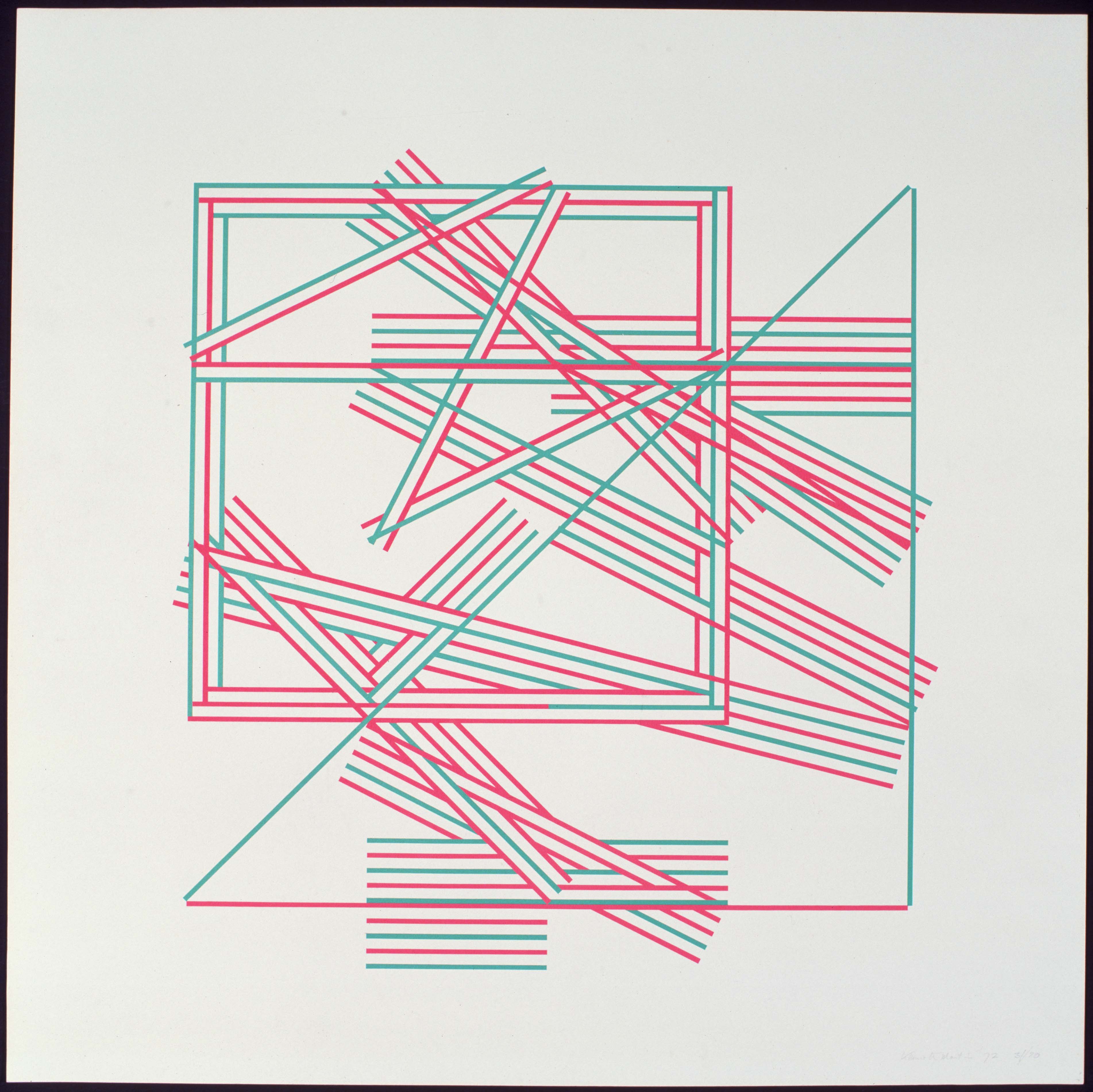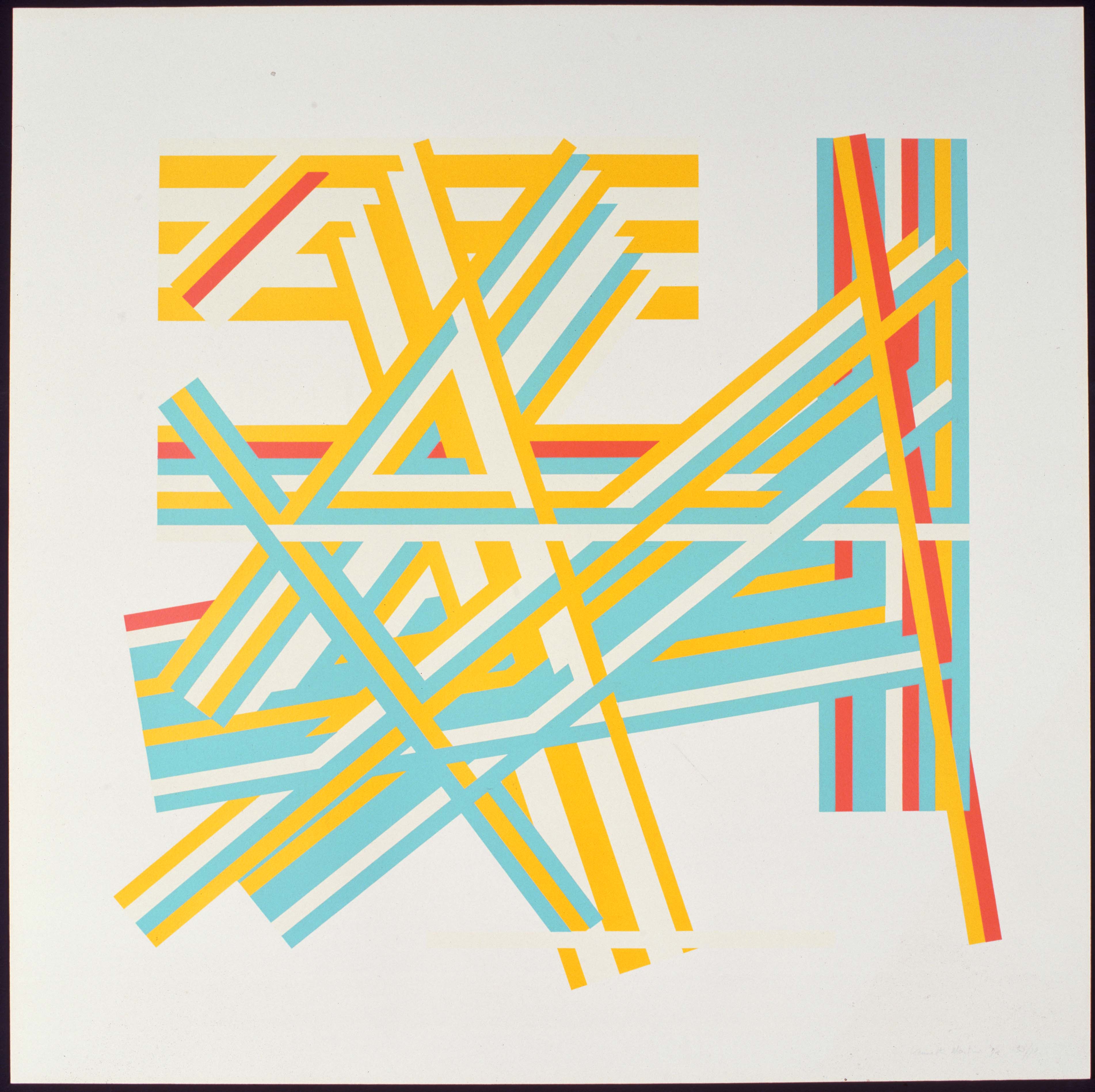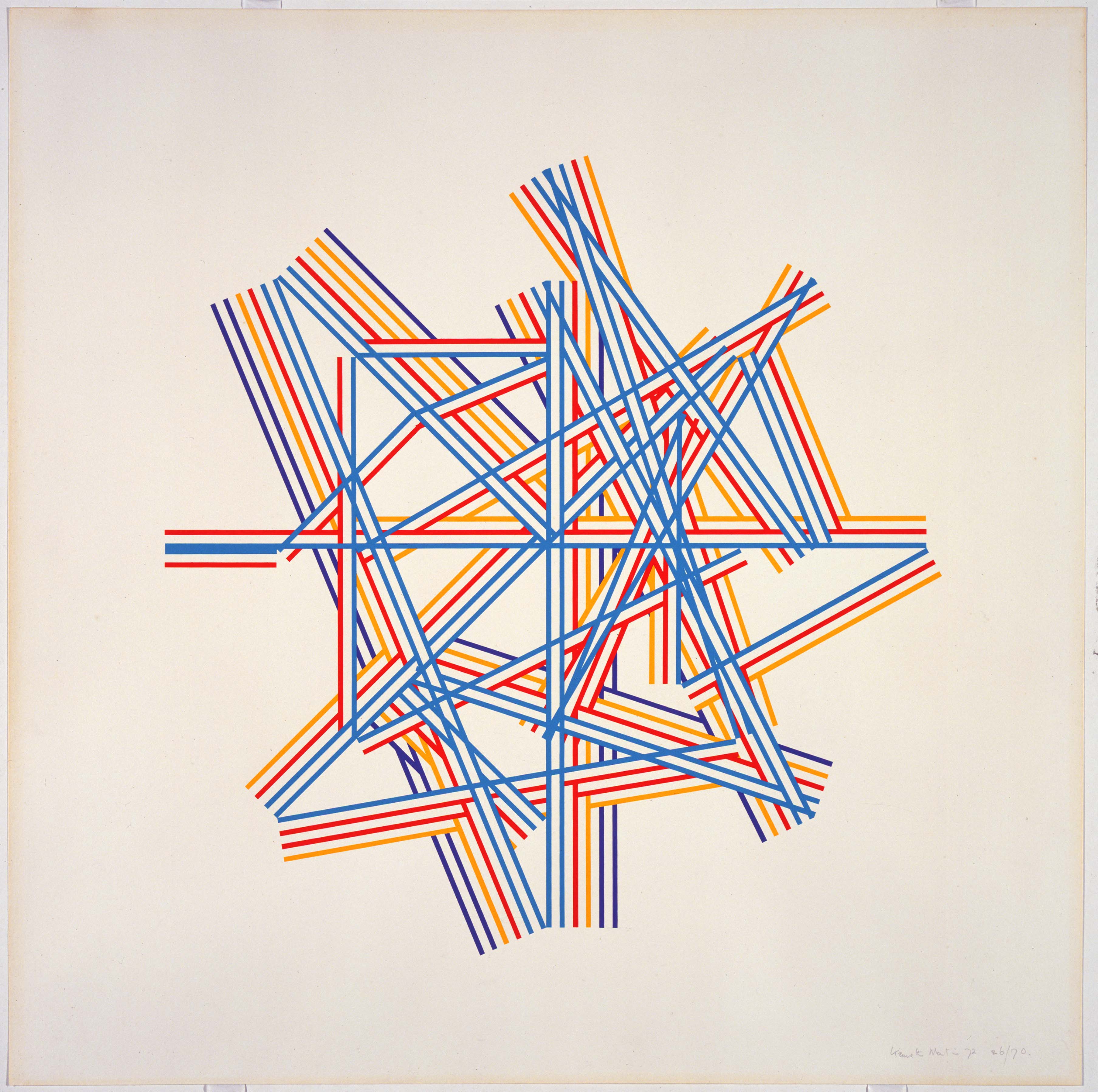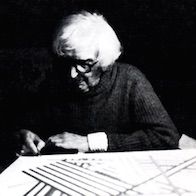Kenneth Martin
Chance and Order (group)
Towards the end of his life Kenneth Martin embarked on a series of paintings and works on paper that he called the Chance and Order Series. In the simplest versions, a grid was set up on paper and its points of intersection numbered. Corresponding numbers were drawn by chance. Each pair of numbers then became a line on the grid. Although the underlying structure remained the same the resulting correspondences produced a seemingly endless succession of combinations. With these works there was therefore a double invitation to explore the paintings and drawings as statements about an inventive process, and to contemplate the products that were generated by that process. The combination of randomness and definite rules left the artist free to invent in an exact sense. You can only develop order but not chance, you can only use the chance again.


